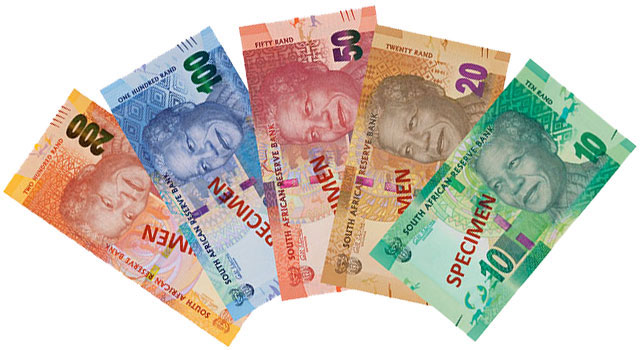
The rand is on the verge of bucking a five-year losing trend.
Instead of holding a trajectory that has seen it lose more than 50% of its value against the dollar since 2011, South Africa’s currency may be about to end a pattern of annual declines, according to Informa Global Markets, which analyses technical trends.
The most accurate rand forecasters support the view that the rand will continue to benefit from the global clamour for yield.
With developed market central bank policies pushing yields on US$11,6 trillion worth of debt to below zero as of the end of September, a wall of money from investors seeking returns is flooding emerging markets, helping the rand gain 13% against the dollar this year.
With forecasters seeing a more than 60% likelihood that the US will increase rates this year, most analysts predict that the rand will weaken. Swissquote Bank, the currency’s best forecaster in the past quarter according to data compiled by Bloomberg, disagrees.
“We believe that the market is overestimating the probability of Fed rate hike in December and the lasting effect if it actually occurs,” said Peter Rosenstreich, head of market strategy at the Gland, Switzerland-based bank.
The European Central Bank, Bank of Japan and Bank of England are all likely to maintain policies to boost their economies, he said. “Risk appetite will remain strong. As long as global central banks keep the punch bowl out, investors will be forced to seek risk and yield.”
The rand will weaken to R14,56/$ by year-end, according to the median of analysts surveyed by Bloomberg. Swissquote Bank sees the rand at R13,50. The currency strengthened by 0,9% to R13,76 by 3.03pm in Johannesburg on Friday.
The rand’s five-year decline has tracked the blow weaker metals prices have dealt to South Africa’s commodity-reliant economy. Persistent shortfalls in the nation’s current account have made its currency vulnerable to shifting global investor sentiment, as flows from foreign buying and selling of South African assets played an exaggerated role in the absence of more robust trade.
The currency slumped to a record R17,92 on 11 January as investors fretted over slowing growth in China. Since then, the rand has advanced 22% to be the biggest gainer in the world after Brazil’s real. That has included three attempts in August and September to break the dollar’s five-year support trend-line. If the technical indicator is breached, the rand could strengthen to the R12/$ level last seen a year ago, according to Informa Global Markets.
“The trend-line is under attack,” said Kamran Sheikh, a London-based technical analyst at IGM. “We have not yet seen any significant rebound from the recent lows near the trend-line. Basically, we are witnessing a correction of the entire 2011-2016 bull run” for the dollar against the rand, “so we have ample room for further downside”. The multi-year trend-line drawn from the rand’s 2011 low was at R13,33 by the end of last week.
Strength
Further strengthening in the rand would vindicate the South African Reserve Bank’s view that it could be near the end of its interest-rate hiking cycle. The central bank has left borrowing costs unchanged at its last three meetings. Inflation in August was the lowest it’s been in 2016, dropping into the Reserve Bank’s 3-6% target range.
“Emerging market foreign exchange will go higher, not lower, on a long-term perspective,” said Georgette Boele, currency and commodity strategist at ABN Amro Bank in Amsterdam, the third-ranked dollar-rand forecaster. “The Fed rate hikes are in the middle. Beyond 2017, the overall view for emerging-market currencies has turned. From 2011 to 2015 it was a downturn. We have just taken new steps into a new trend this year, an uptrend compared with the dollar.” — (c) 2016 Bloomberg LP
- Reported with assistance from Wei Lu


